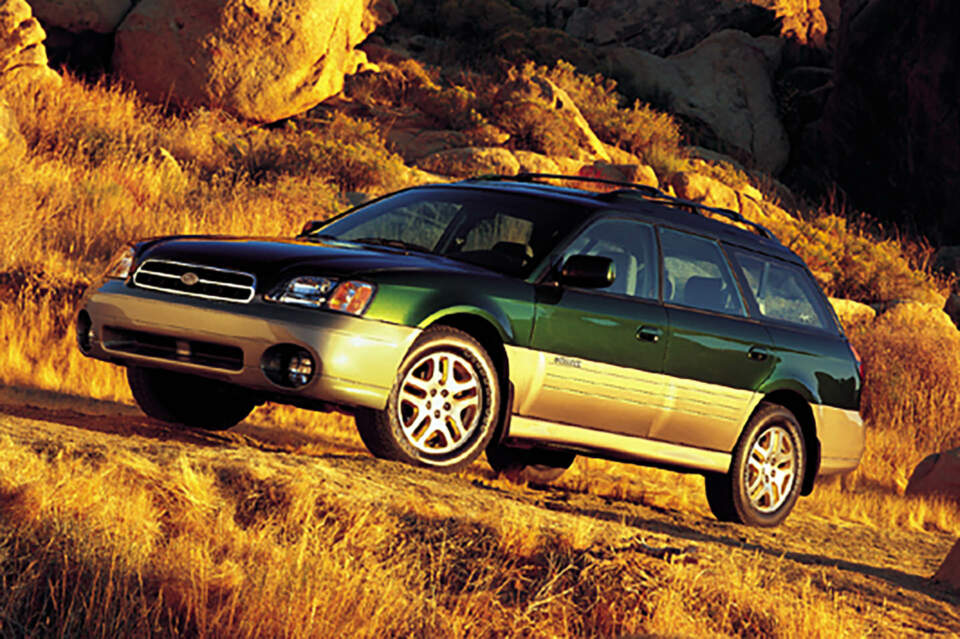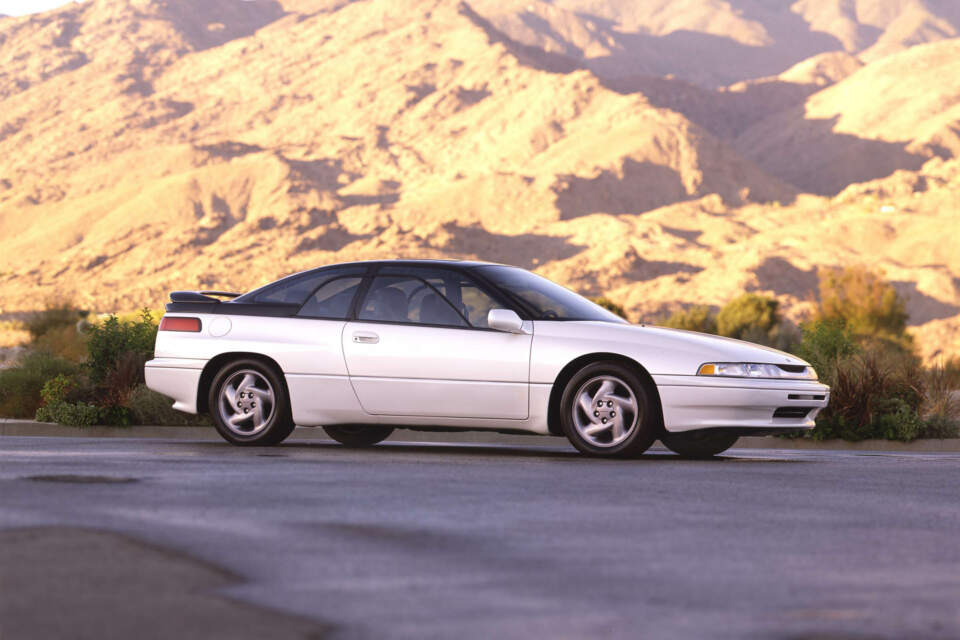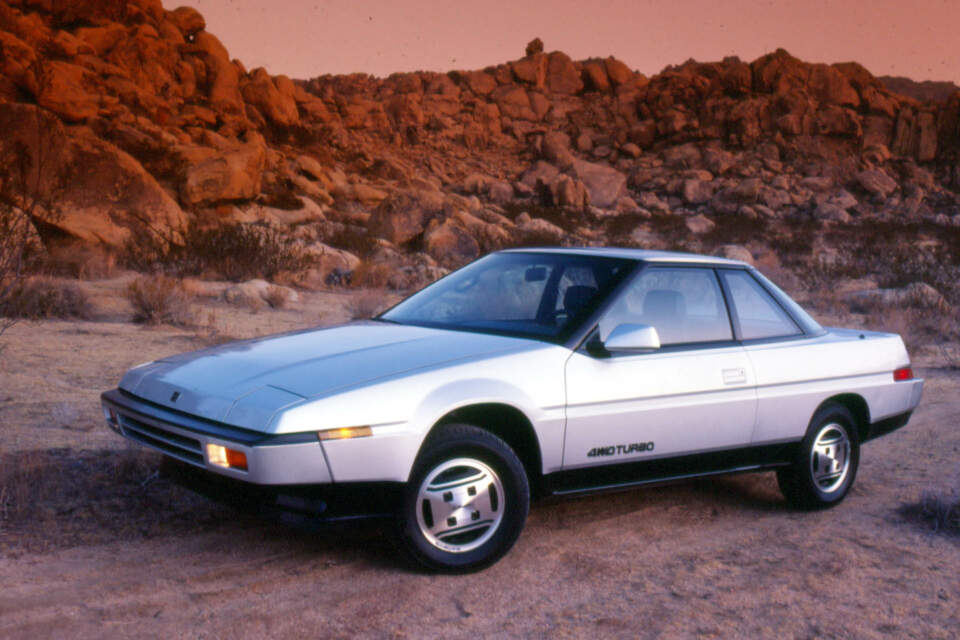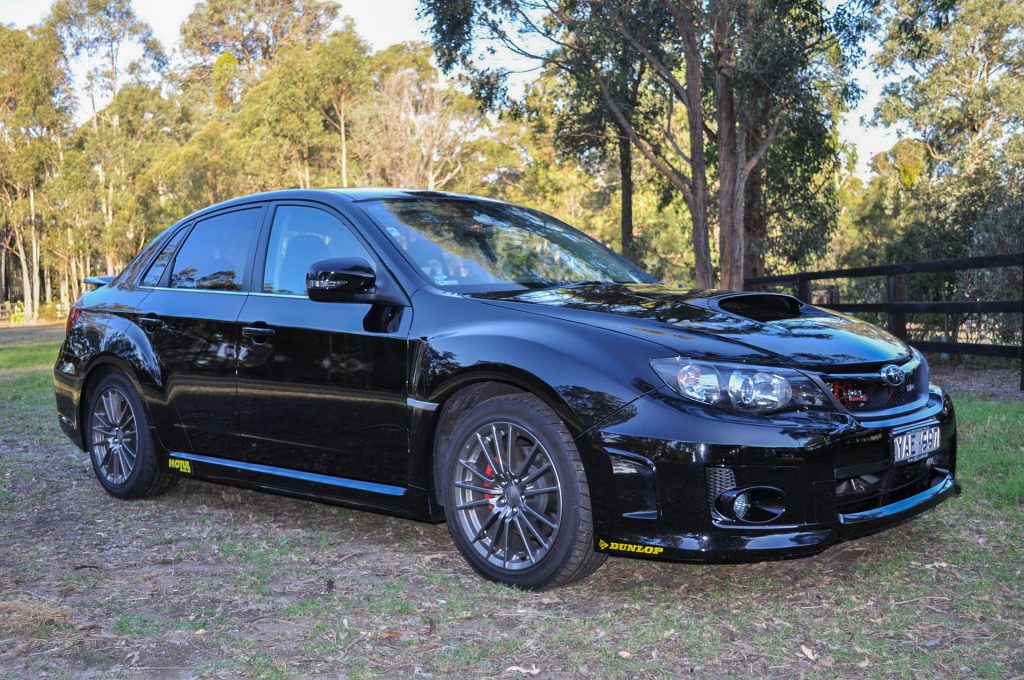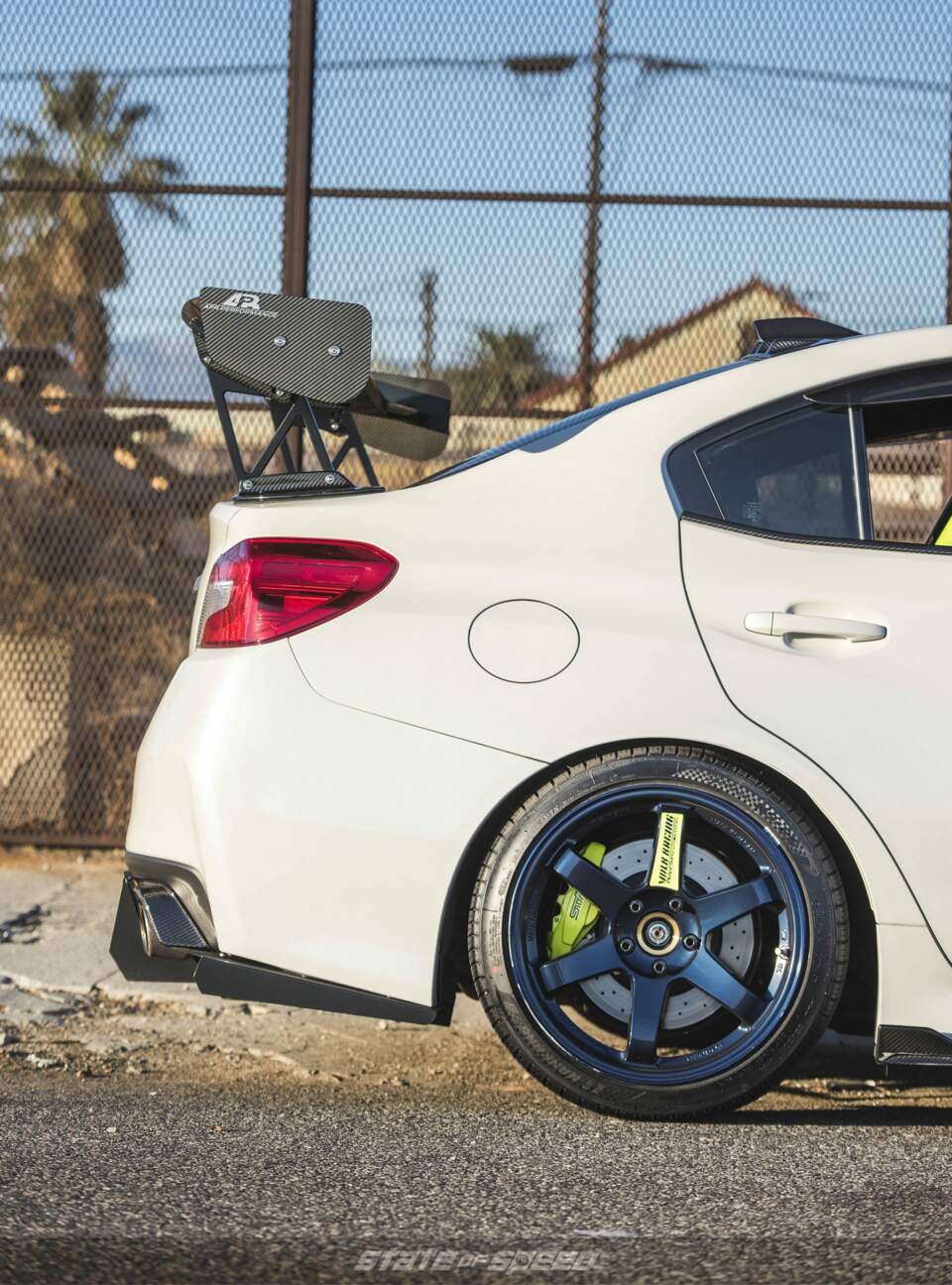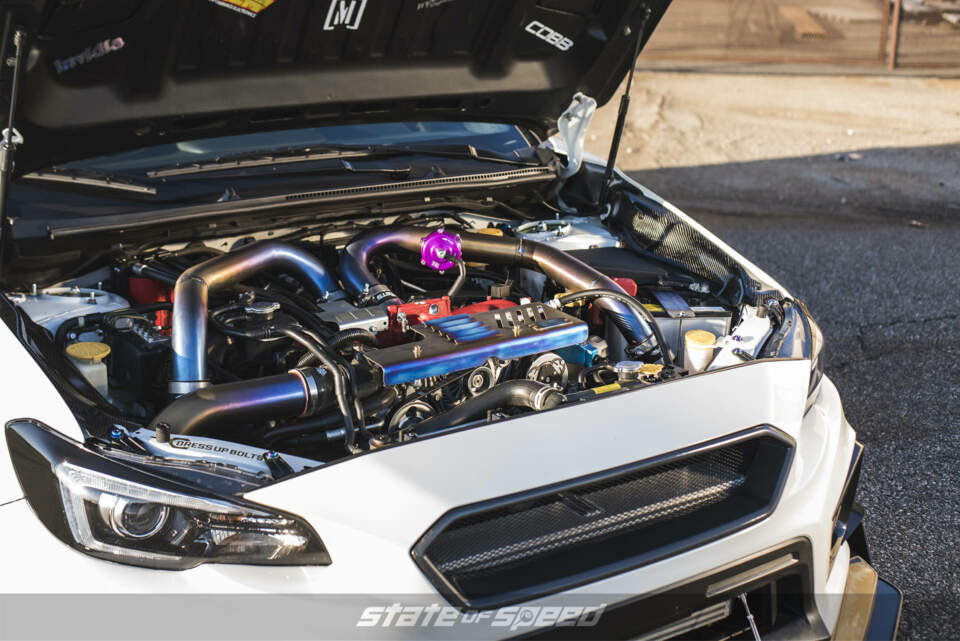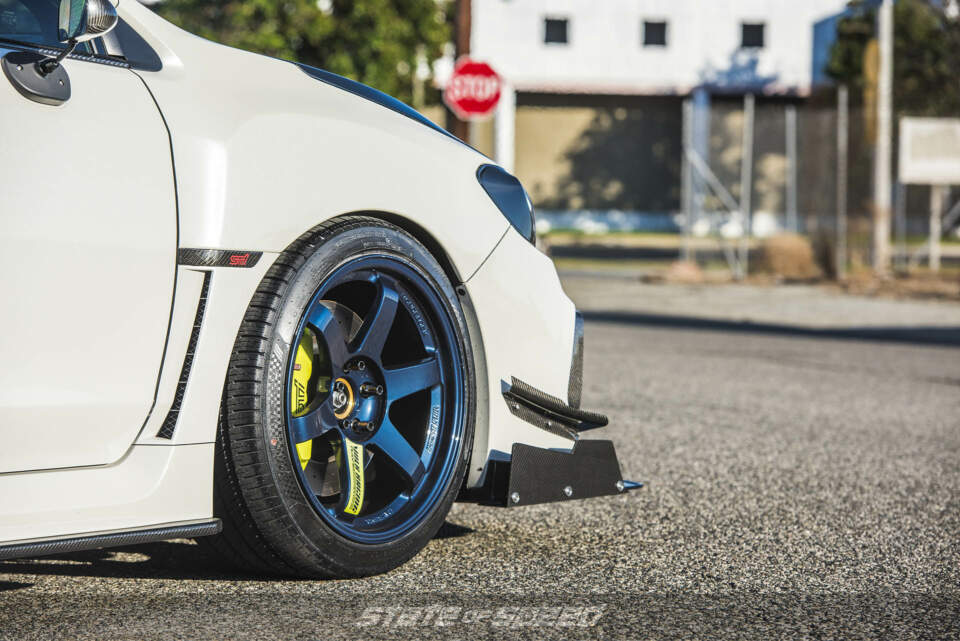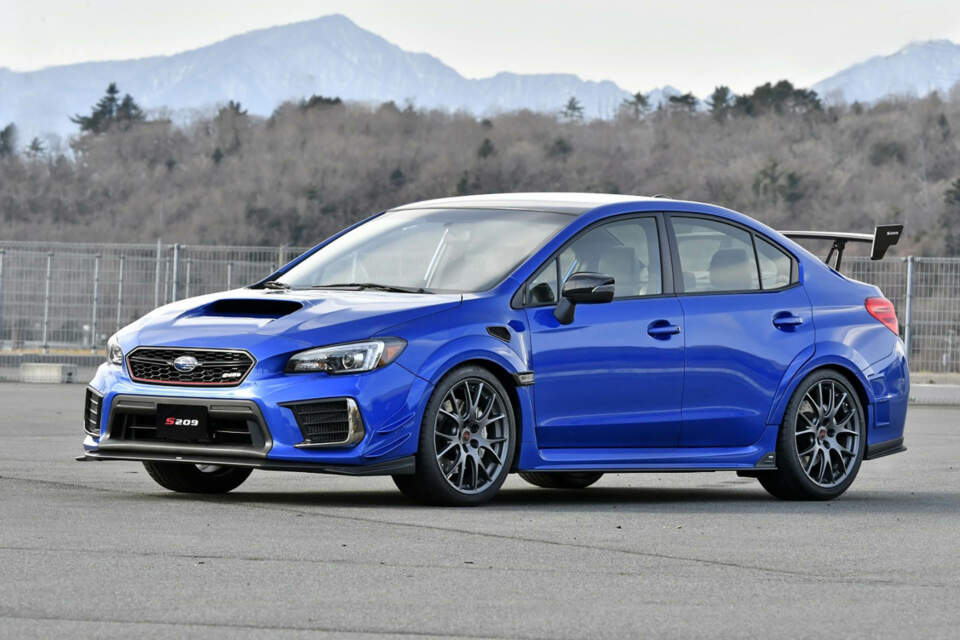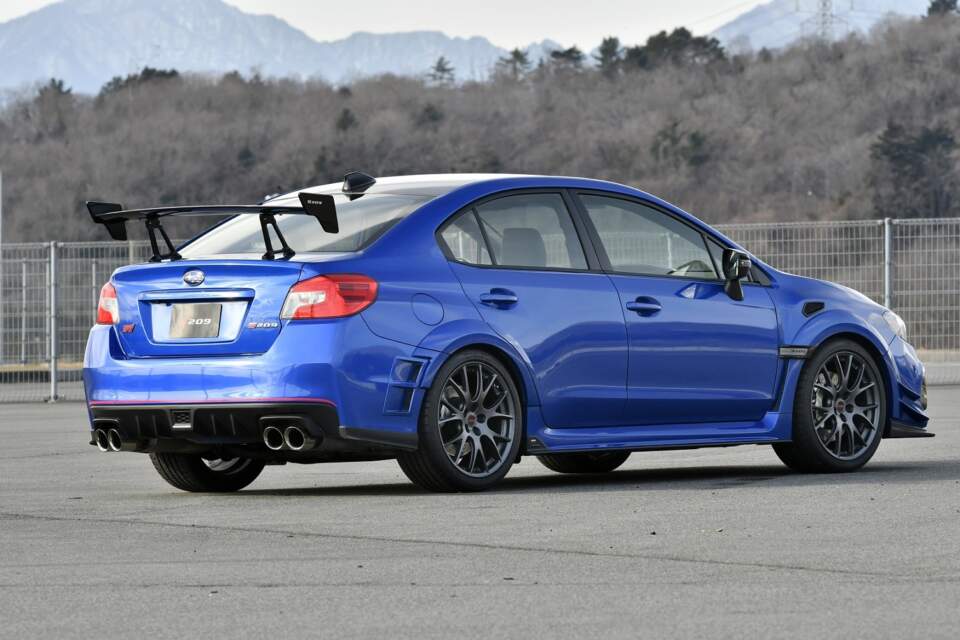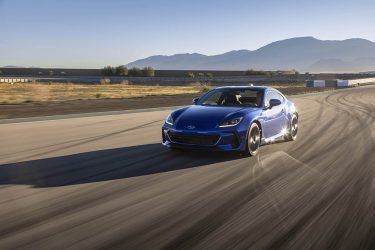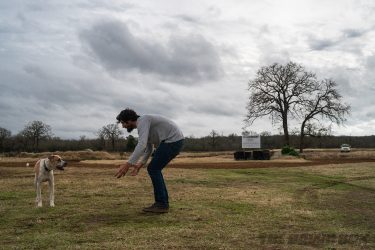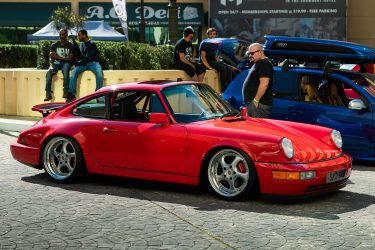Rally Legend:
Subaru Tecnica International (STi) History
Among Japanese car manufacturers, Subaru has always had the reputation for building quirky cars that defied mainstream thinking, but they’ve also led the way to many innovations that have become commonplace today. Sure, there have been plenty of weird and wonderful Subies like their first “sporty” car, the XT, the Brat, the SVX, and the Baja. But they were also the manufacturer who brought full-time all-wheel-drive to the masses, and they more or less invented the “crossover” market with the Outback (with apologies to the 1979-1987 AMC Eagle, which was as far ahead of its time as the 1957 Ford Fairlane 500 Skyliner with its retractable hardtop.)
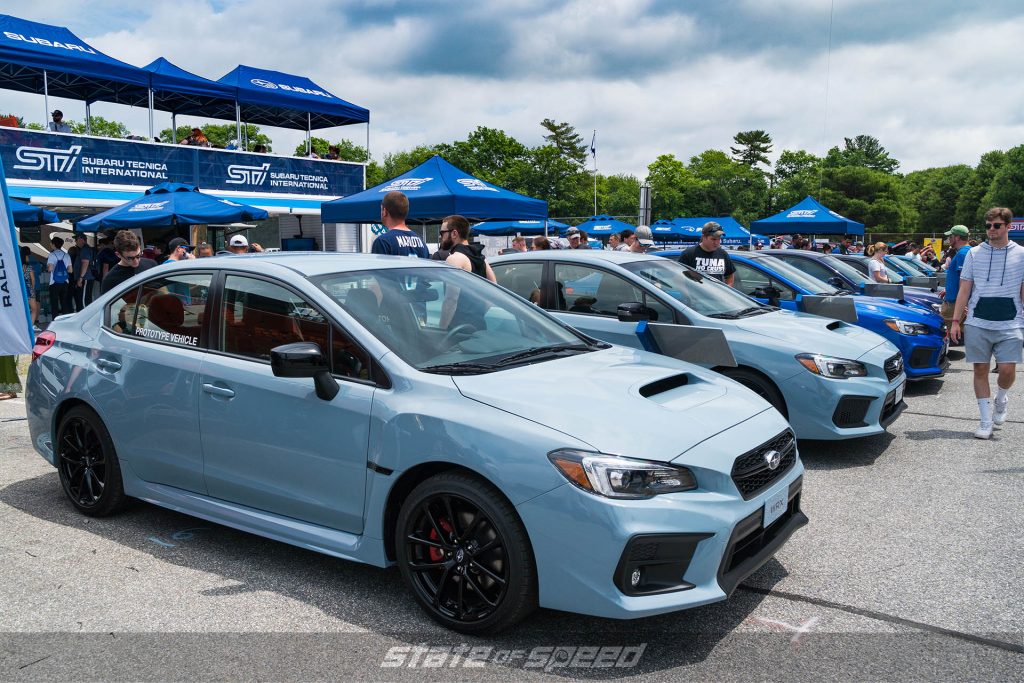
Today, Subaru’s split personality can still be seen in their product lineup, dominated by CUV variations but also including a select few performance models, topped by the new S209 STI. To understand how we got to today’s Subaru Tecnica International, we need to hop in the Wayback Machine and take a journey to the fabulous Disco era, and the revolution brewing in rally competition.
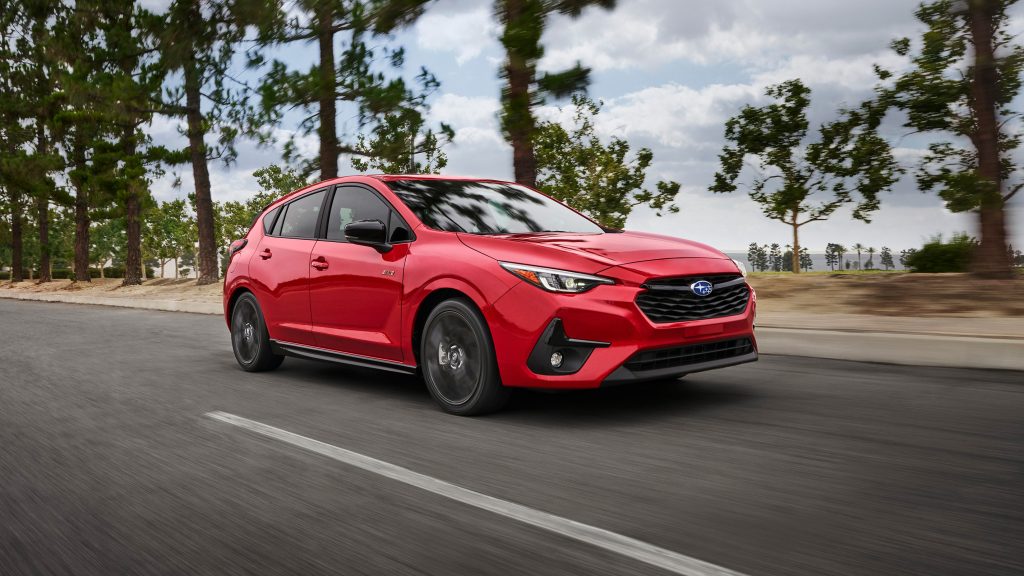
Photo Credit: Subaru
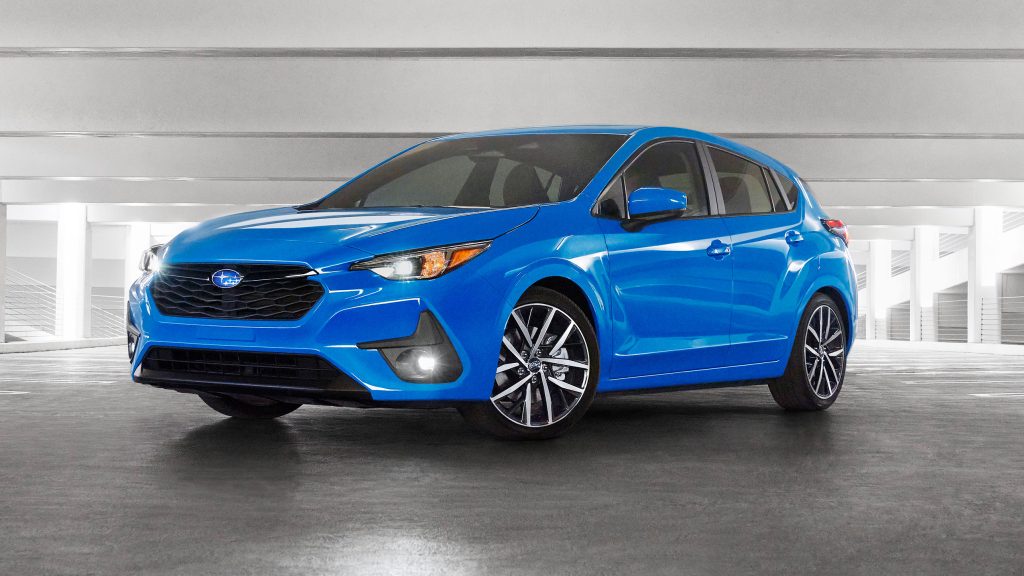
Photo credit: Subaru
HUMBLE BEGINNINGS
The current Subaru corporation can trace its carmaking roots back to tumultuous post-war 1950s Japan, and even further still to the Nakajima Aircraft Company of the inter-war period, creator of the B5N “Kate” torpedo bomber that was the mainstay of the Imperial Japanese Navy’s carrier strike groups during World War II. After the Allied victory, Nakajima was reorganized into Fuji Sangyo, Ltd. and then subdivided into a dozen smaller companies in 1950 as part of the Japanese government’s efforts to break the influence of powerful business interests known as Zaibatsu. In the swirling environment of rebuilding the country’s manufacturing infrastructure basically from scratch, several of the twelve business entities came back together to create Fuji Heavy Industries in the mid-fifties and started working on plans to build the kinds of small cars that had begun to supplant scooters and bicycles in the Japanese market as buyers became more affluent.
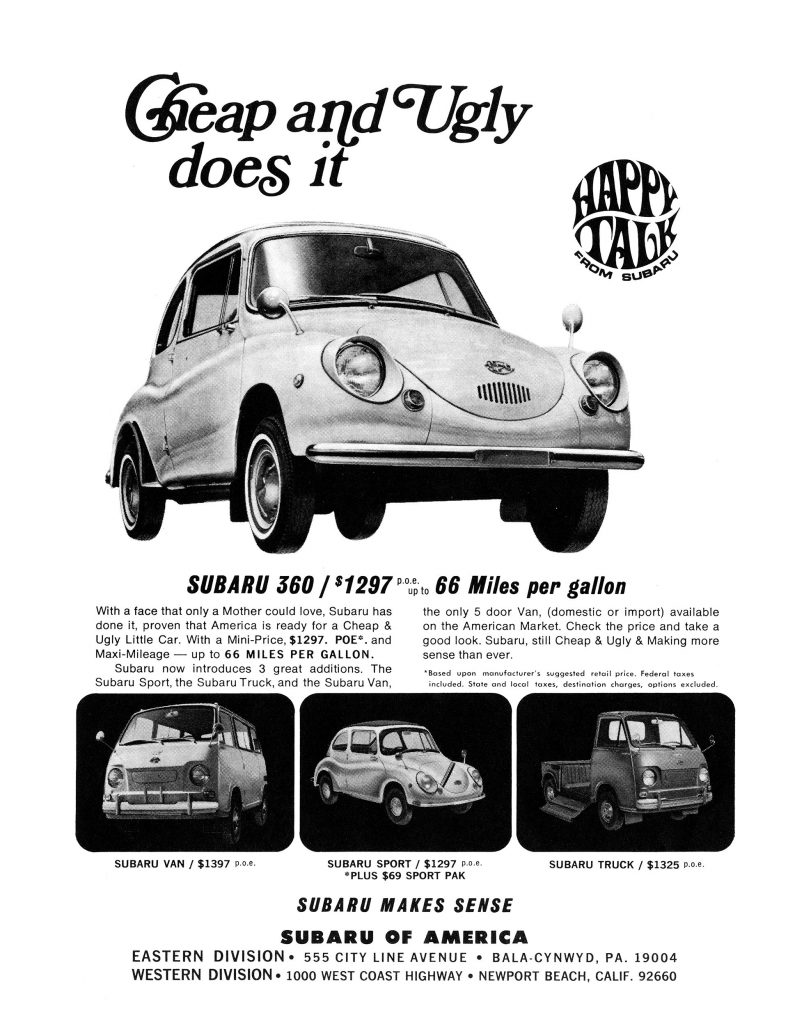
The car most familiar to Americans from this period has to be the 360, Subaru’s first model to be produced in substantial numbers. Falling within the “Kei car” regulations for smaller vehicles taxed at a lower rate in its home market, the 360 was imported to the US to the tune of about 10,000 units total by the ahead-of-his-time entrepreneurial genius / con-man (depending on who’s telling the story) Malcolm Bricklin, laying the foundation for today’s Subaru of America. Advertised as “Cheap and Ugly,” the 360 was powered by a 2-cylinder 2-stroke 356cc engine and had a curb weight of fewer than 1,000 pounds empty. When Brickin and SOA were unable to sell all the 360s brought into the ‘States, even at the bargain price of $1,300 new in 1968, he attempted to make lemonade out of the situation with a franchise scheme called “FasTrack” that combined RV sales with autocross-style parking lot racing of the 900 or so leftover cars that couldn’t find buyers. As you might imagine, this was not a wildly successful venture and quickly became nothing more than a footnote to Subaru’s racing history.
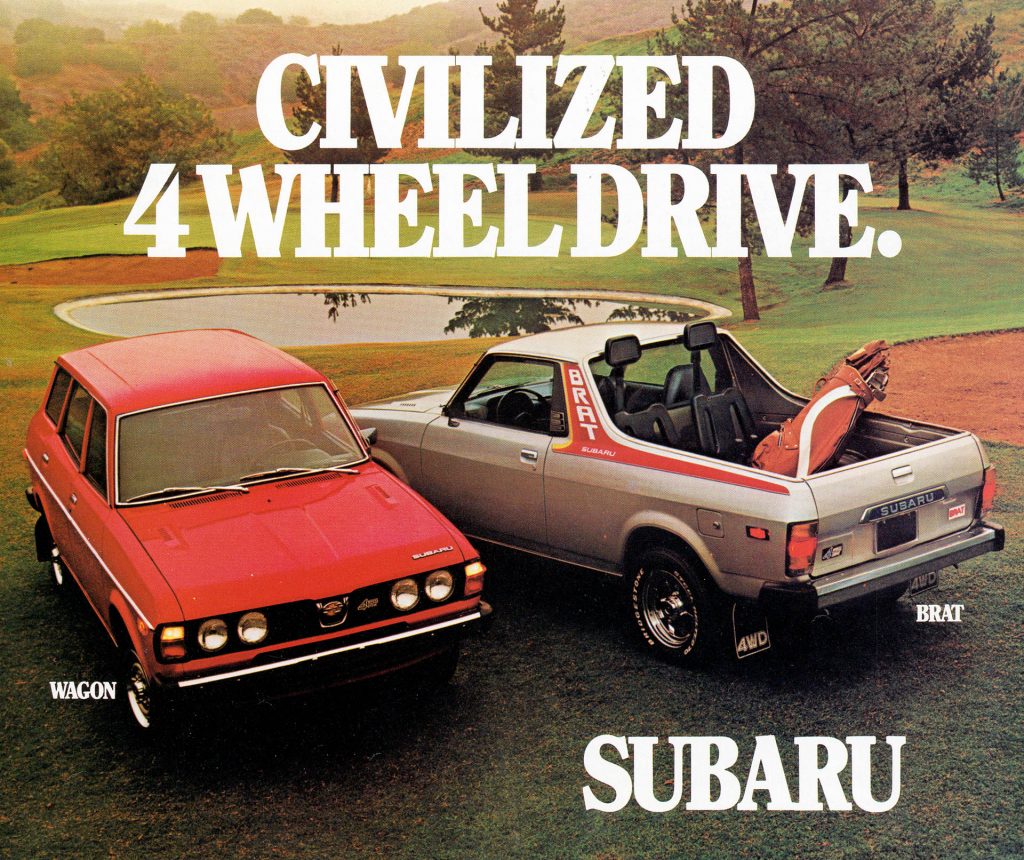
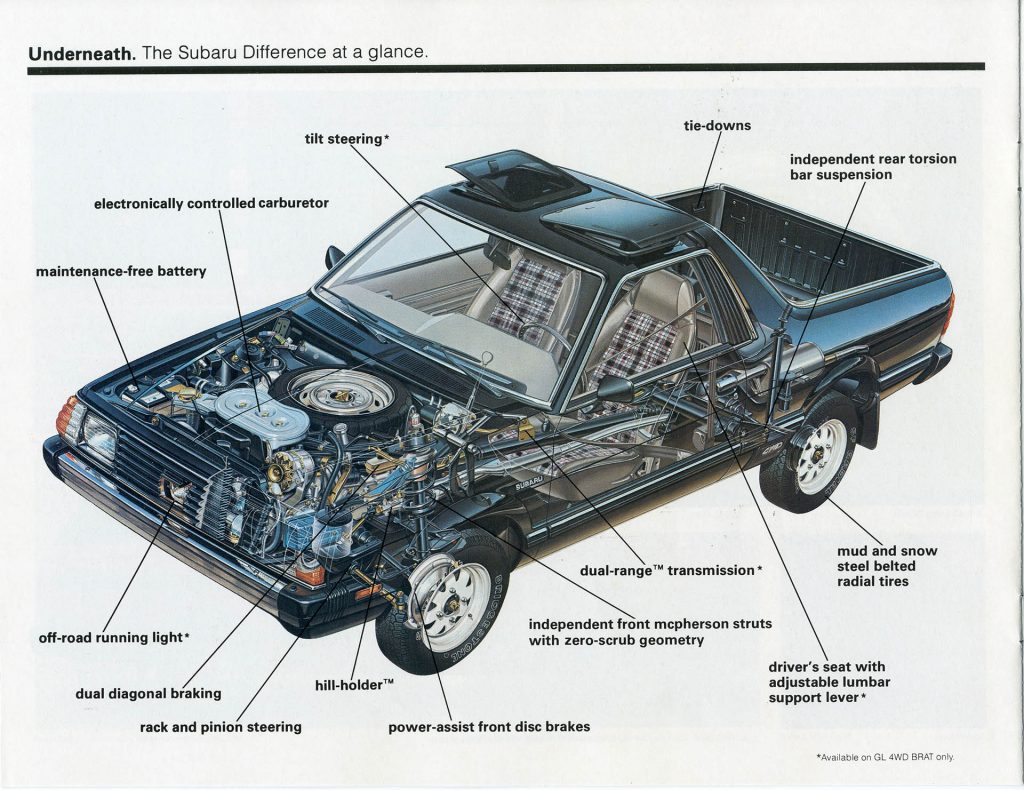
AN AGENT OF CHANGE
In 1968, Japan’s government-mandated a partnership between Fuji Heavy Industries and Nissan, with the latter taking a 20 percent stake in the former under a plan to make the country’s auto manufacturing sector more competitive internationally. After this merger, Subaru began making inroads into the US market, including the creation of the cult favorite Brat in 1978. The Legacy would follow in 1989, along with the Impreza, which was introduced in 1993. When Nissan was gobbled up by the Renault group just before the turn of the century, their piece of Fuji Heavy Industries was sold off to General Motors, leading to the weirdness of the badge-engineered Saab 9-2X, a mildly restyled Impreza. By 2005, GM had sold off their chunk of FHI, with a fraction going to Toyota, who later invested more capital to gain an overall 16.5% stake in the company. That intermarriage led to projects like the “Subieyota” BRZ/FR-S/Toyota 86 that we know today.
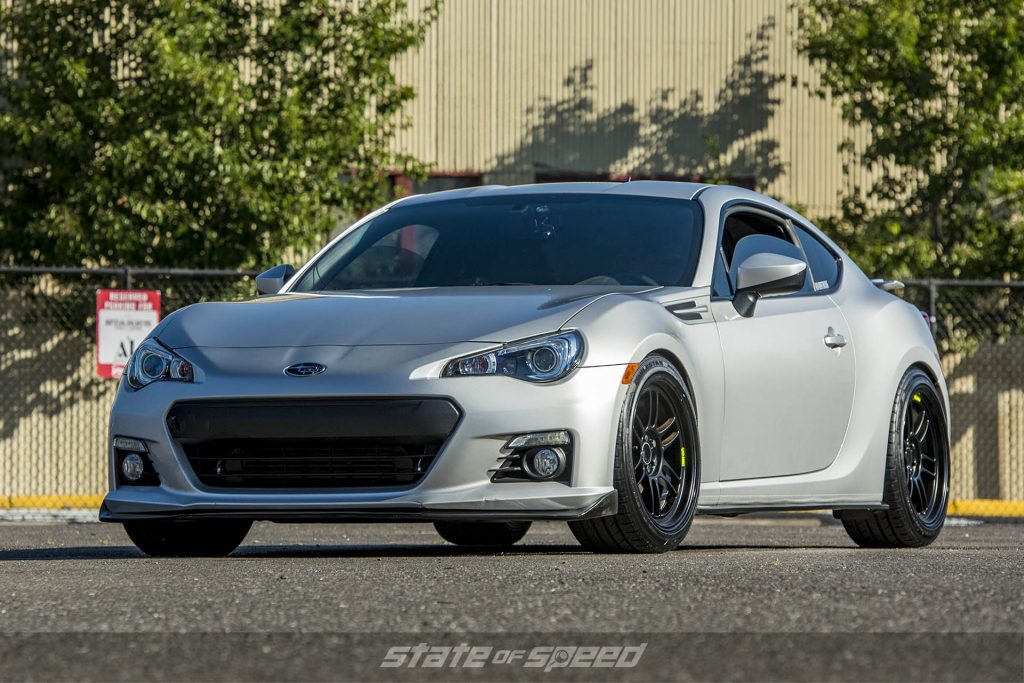
Tires: MS932 XP+
Against this backdrop of ownership changes, Subaru was making moves to break out from the “Cheap and Ugly” mold, and in the late 80s, one of the best ways for an automobile manufacturer to show off their chops was in the blossoming world of international rally competition. As early as 1980, Subaru had campaigned Leone coupes in the WRC, and while Audi is often seen as the pioneer in AWD performance with their seminal Quattro, Subaru was right there in the fight with their AWD competition models. In 1988, Subaru Tecnica International was founded to consolidate the company’s motorsports efforts under a single organization, and the new Legacy platform was drafted into competition service.
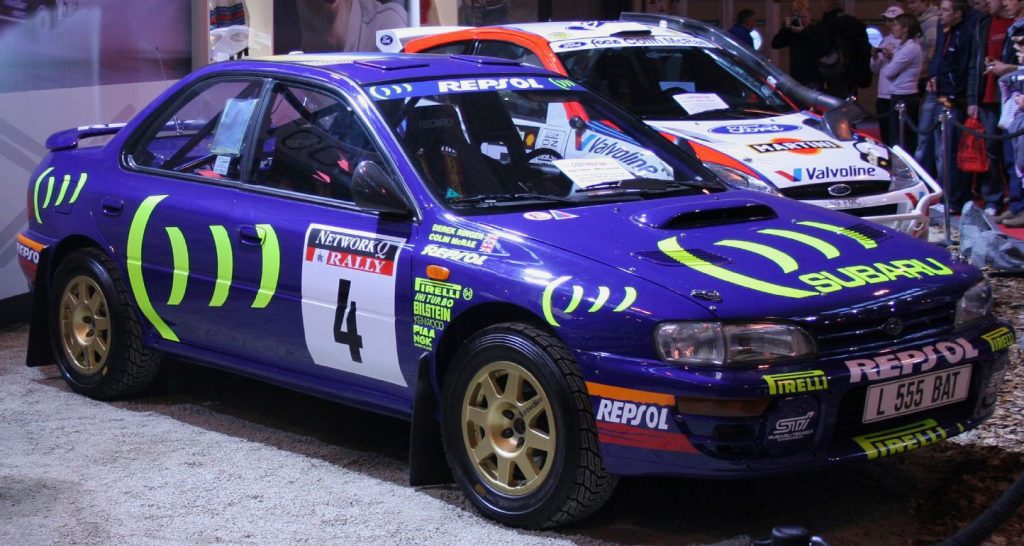
With the introduction of the Impreza for 1992, STi (the lower case “i” would be ditched in favor of capitalization in 2006) had a smaller, more nimble car as a starting point for their factory-backed rally efforts. In cooperation with the UK-based Prodrive motorsports company began to develop “World Rally eXperimental” (WRX) versions of the Impreza, first for competition and homologation, subsequently expanding to become a more broadly-based performance designation, much like Nissan had done with the NISMO moniker.
BIRTH OF A LEGEND
The original GC8A WRX, which was introduced in the waning months of 1992, featured power from a 237-horsepower turbocharged 2-liter version of Subaru’s then-new EJ engine, a flat-four design that followed in the footsteps of the previous EA design that dated back to the mid-1960s. The horizontally-opposed four-cylinder layout, while somewhat more expensive to manufacture than a typical inline-four, offers the advantages of being short front-to-back, allowing a longitudinal instead of transverse crankshaft layout even when coupled to an all-wheel-drive transaxle, and it also has a very low center of gravity compared to inline designs.
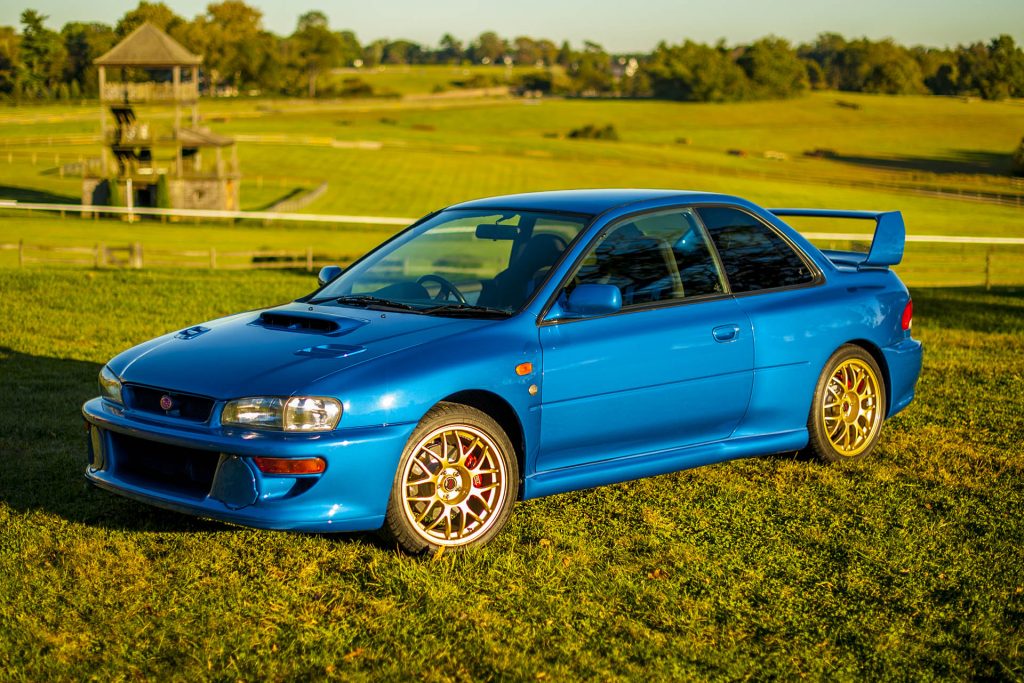
Though there was no official STi version of the GC8A, the WRX Type RA was offered as the starting point for competition modification, with deleted comfort and convenience features like air conditioning, power windows, and soundproofing. All WRX models at the time featured viscous coupling differentials in the center and rear, and the RA added a close-ratio manual gearbox to the mix.
…cars destined for 22B status received bodywork modification, a Bilstein suspension package, larger wheels and tires, STi brakes, and other modifications, creating the iconic “classic” WRX STi.
The following CG8B, which debuted for the 1994 model year, was the first WRX available with an official STi designation. The engine’s output was uprated from the standard 237 horsepower to an advertised 247 in the STi models, and an STi RA version, also stripped of components not needed for competition cars, delivered 271 horsepower “at the brochure” and substituted an electronically-controlled center differential that could be manually locked by the driver in place of the standard viscous coupling.
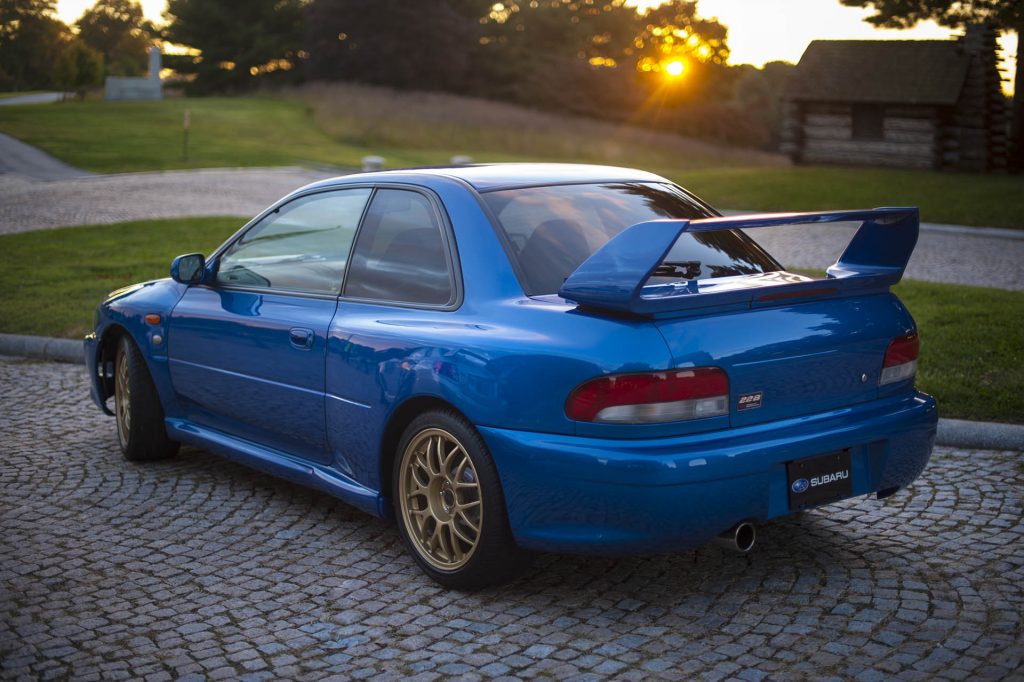
Fast on the heels of the 8B was the CG8C for 1995, bumping power in the WRX model to 256 ponies and 271 for the STi, and many different special versions were produced including Prodrive-prepped “Series McRae” cars for the UK market, and V-Limited editions for Japanese sales. The 8C model was superseded by the GC8D at the end of 1996 for the following model year with updated styling, 276 horsepower from the EJ20 in both the ‘standard’ WRX and STi models (likely a conservative number to stay under the ‘gentlemen’s agreement’ among Japanese manufacturers to not advertise any streetcar with more than 280PS), and a coupe version. The following CG8B, which debuted for the 1994 model year, was the first WRX available with an official STi designation. The engine’s output was uprated from the standard 237 horsepower to an advertised 247 in the STi models, and an STi RA version, also stripped of components not needed for competition cars, delivered 271 horsepower “at the brochure” and substituted an electronically-controlled center differential that could be manually locked by the driver in place of the standard viscous coupling.
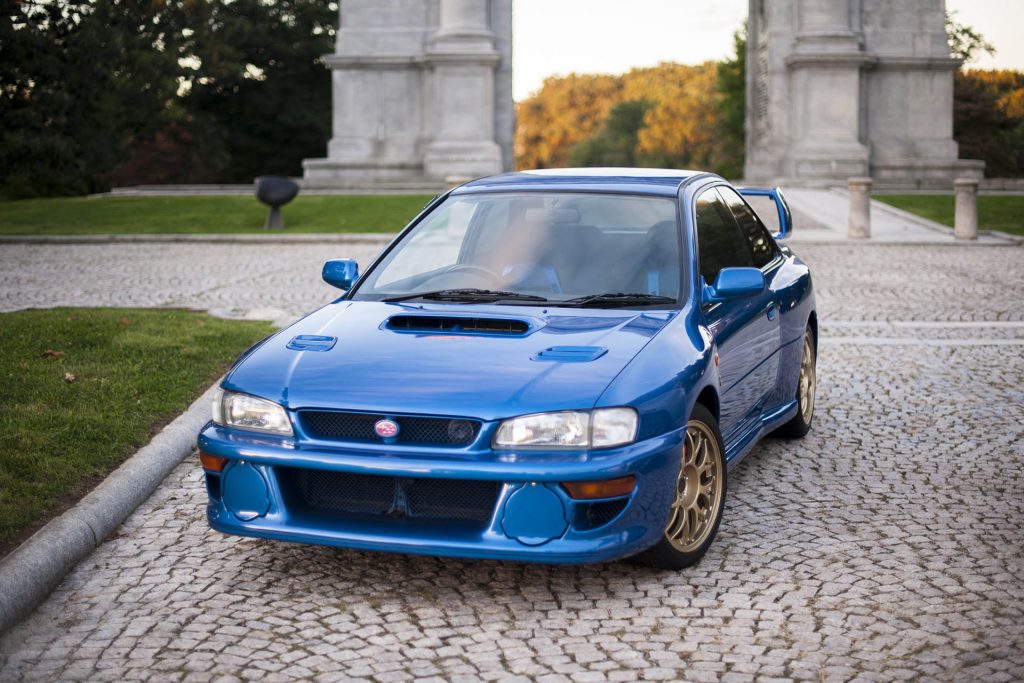
More detailed changes followed for the GC8E for the 1998 model year, but the big news for enthusiasts was the extremely limited production (less than 450 total, primarily for the Japanese domestic market) of 22B STi. This version featured a distinctive wide-body fender fitment and the EJ22 engine, overbored to a 2.2-liter displacement but still nominally rated at 276 horsepower, though in reality producing substantially more. Starting with production line WRX Type R chassis, cars destined for 22B status received bodywork modification, a Bilstein suspension package, larger wheels and tires, STi brakes, and other modifications, creating the iconic “classic” WRX STi.
The highlight was the 2000 WRX STi S201 – limited to just 300 units, it had the entire STi parts bin thrown at it…
The GC8F and 8G rounded out the end of first-gen WRX production in 1999 and 2000, respectively, carrying over the majority of the previous design with minor detail changes and numerous special/limited editions. The highlight was the 2000 WRX STi S201 – limited to just 300 units, it had the entire STi parts bin thrown at it and a rated output of 305PS (300 horsepower, give or take a pony).
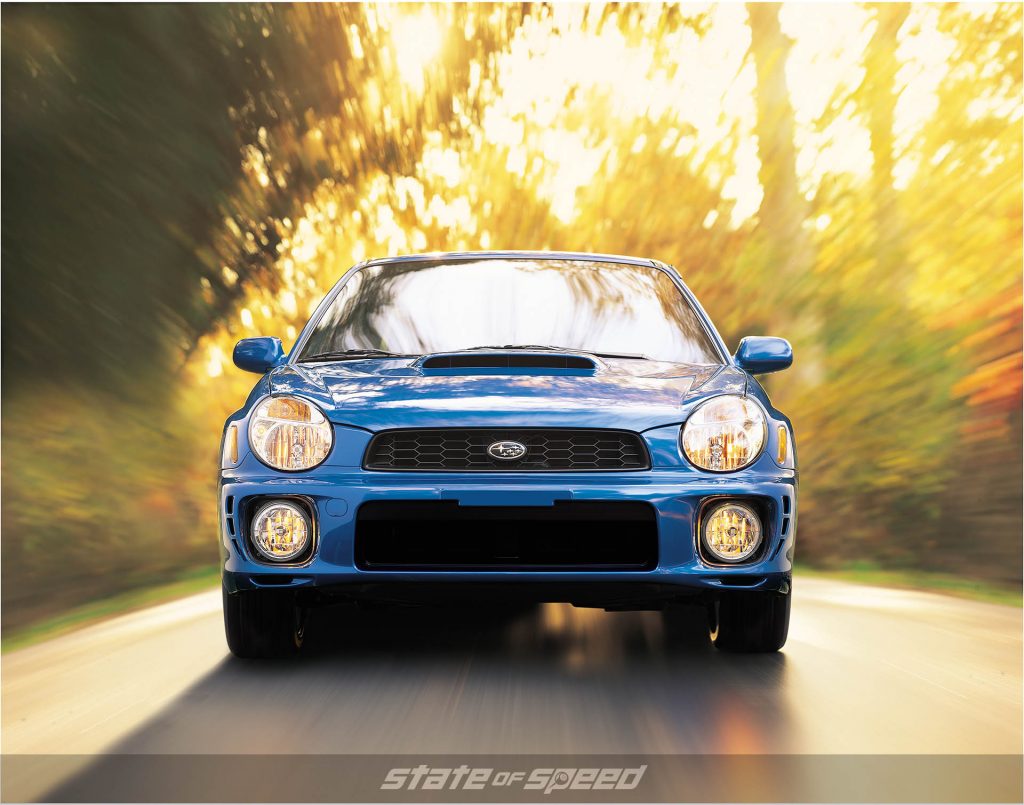
COMING TO AMERICA
For the 2001 model year, the Impreza received a complete makeover – the coupe version would no longer be available, but most notably, the car was given “New Age” styling (uncharitably referred to as “bug-eye” by many enthusiasts). In 2002, the WRX finally made it to US shores with a 227 horsepower turbo EJ20 powerplant. The “blob-eye” nose replaced the original styling of the GD platform in America for the 2004 model year, but more importantly, US buyers finally got access to an STi version of the WRX. Spurred by market competition from the 271 horsepower Mitsubishi Evo, Subaru gave stateside STi models a 300 horsepower EJ25 heart transplant, along with a larger scoop for the top-mount charge cooler and a Driver Controlled Center Differential that allowed manual selection of front to rear torque distribution from 50/50 to the automatic mode’s 35/65 split. The chassis received additional bracing, forged 17 inch BBS wheels were standard, and Brembo brakes went on all four corners.
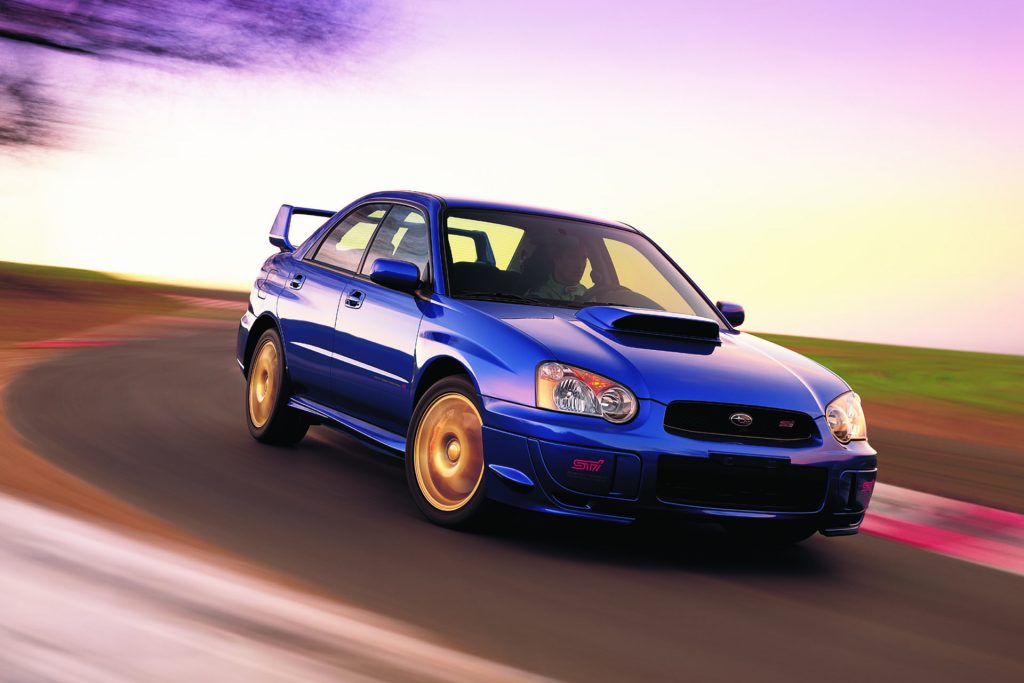

2006 brought another facelift for the GD in US showrooms, with the “hawk-eye” front end making its debut. More importantly, though, motivation for the base USDM WRX was upgraded via substitution of the larger-displacement EJ25 in place of the EJ20, bumping horsepower just a bit to 230 but raising and broadening the torque curve. Upgraded brakes with four-piston front calipers, aluminum front suspension links, and 17-inch wheels became standard for the WRX as well. In 2007, a slew of minor changes (besides the “I” in STI getting promoted to upper case) was made to the top Impreza model, including suspension revisions (some of which were prompted by a desire to cut costs), taller second, third, and fourth gears, and a switch to a Torsen rear differential. An 800-unit run of the STI Limited model added some cosmetic touches to the exterior and leather upholstery.
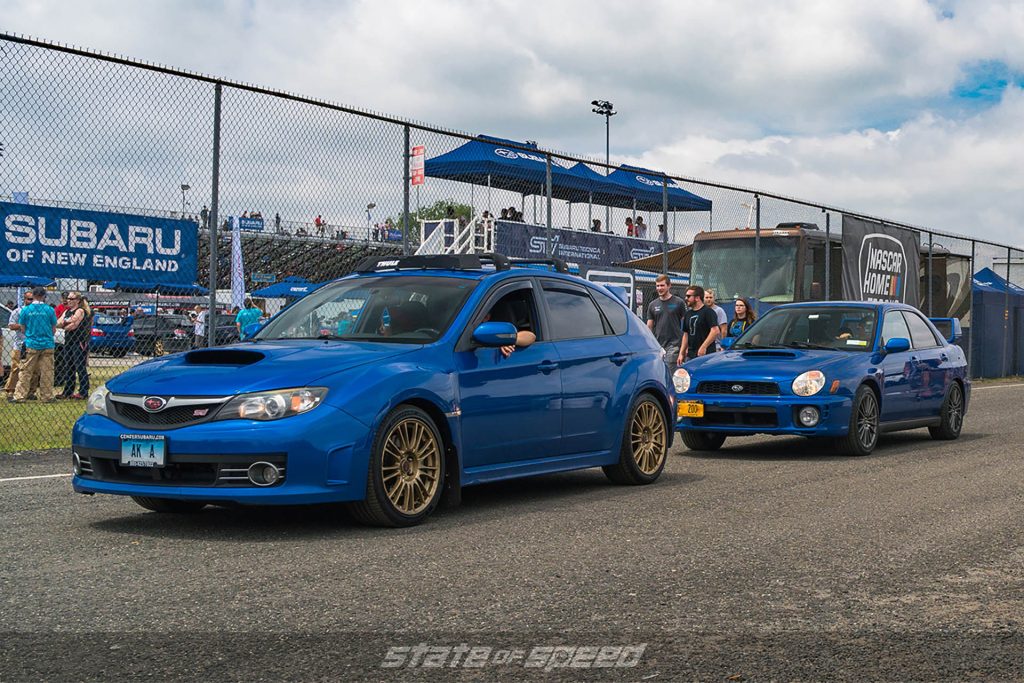
The third-generation Impreza, introduced in the spring of 2007 for the 2008 model year, offered the STI model to US consumers exclusively in a five-door “mini-wagon” body style – sedan and coupe fans were out of luck. Five more horsepower was squeezed out of the turbo flat-four, for a total of 305, and some of the “boy racer” styling cues like the enormous hood scoop and wing of the previous version were toned down. Brembo brakes were again standard, along with 18-inch wheels, a helical limited-slip differential up front and a Torsen LSD in back, and the latest DCCD in the middle with three automatic and six manual modes to tailor torque delivery between them.
The “base” WRX received an upgrade in power to a rated 265 horses for 2009, while the STI model remained unchanged, save for minor details. The status quo remained through the 2010 and 2011 model years, and the STI kept pace with its perennial rival, the Mitsubishi Lancer Evo X. In 2012, a fourth generation Impreza was unveiled, but the WRX and STI lingered on, still based on third-gen architecture. Power for the STI remained the same, but a sedan version joined the 5-door body style to the joy of those who had missed the notch-back look. Much like Toyota had done decades earlier by splitting the Supra from its Celica roots into a model line of its own, Subaru had signaled that the WRX and STI would become distinct from the lesser Impreza lineup.
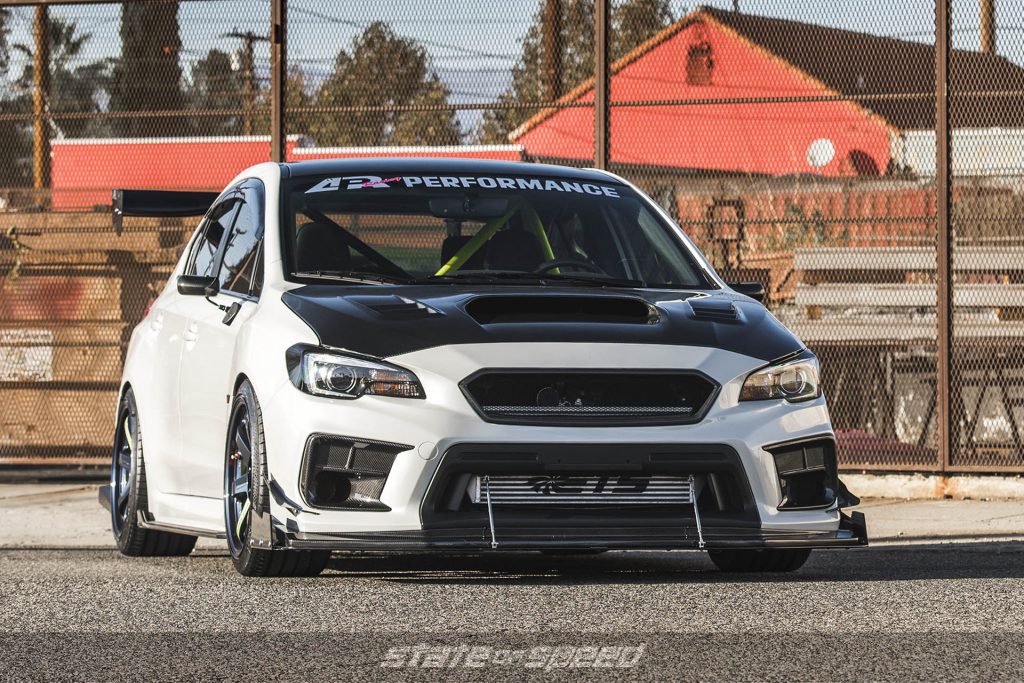
Tires: Nankang NS-25
SEPARATE PATHS
The WRX and STI got their belated update for the 2015 model year, and while the “basic” WRX got another small bump in power with a switch to the 2.0-liter FA20F engine with an advertised 268 horsepower and 258 pound-feet of peak torque, the STI retained the 305 horse EJ carried over from the previous generation. This time around, long-roof fans were out of luck, as both models no longer were offered in hatchback/5-door/wagon body styles. With the Evo gone from the scene, the direct competition for the STI became cars like the AMG CLA45, which was considerably more expensive, and the Golf R and Focus RS – both worthy adversaries, but not necessarily something that would get cross-shopped against Subaru.
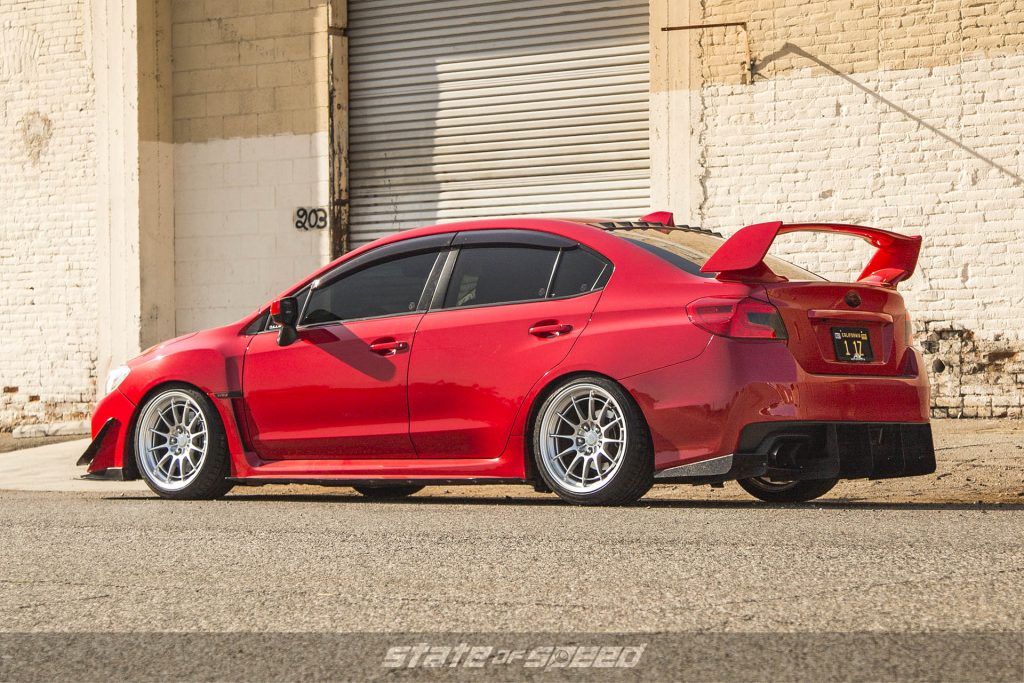
Tires: MS932 XP+
After cosmetic updates for 2018, there was finally some real news for 2019 – for the first time, there would be an “S-model” STI sold in America. The 2019 STI S209, unlike the largely hand-built S201-S208 models that were only available in the home market, cleared the obstacles in place for US homologation, very late in the model year. Based on the STI RA, which itself received a minor 5 horsepower bump to 310 ‘at the brochure,’ the S209 picked up a far more substantial increase to peak numbers of 341 horses and 330 pound-feet. Wider wheels and 265/35R19 tires, recalibrated suspension (including a 10mm drop to offset the taller tire package), grippier brake pads, and a ton of aero changes distinguish the S209 from its lesser STI brethren. Unfortunately, with just 209 cars slated for the US, a $10,000 premium in MSRP over the RA, and inevitable dealer markup shenanigans, this ultimate USDM STI is also breathtakingly expensive.
Whether you look at Subaru’s history and see their offbeat, iconoclastic approach, or focus on the wild-child STI division, it’s impossible to ignore the influence they’ve had on the automotive industry. While there’s no way to know what the future holds, it’s a safe bet to say that they’ll continue to follow their path, while the rest of the world tries to keep up.
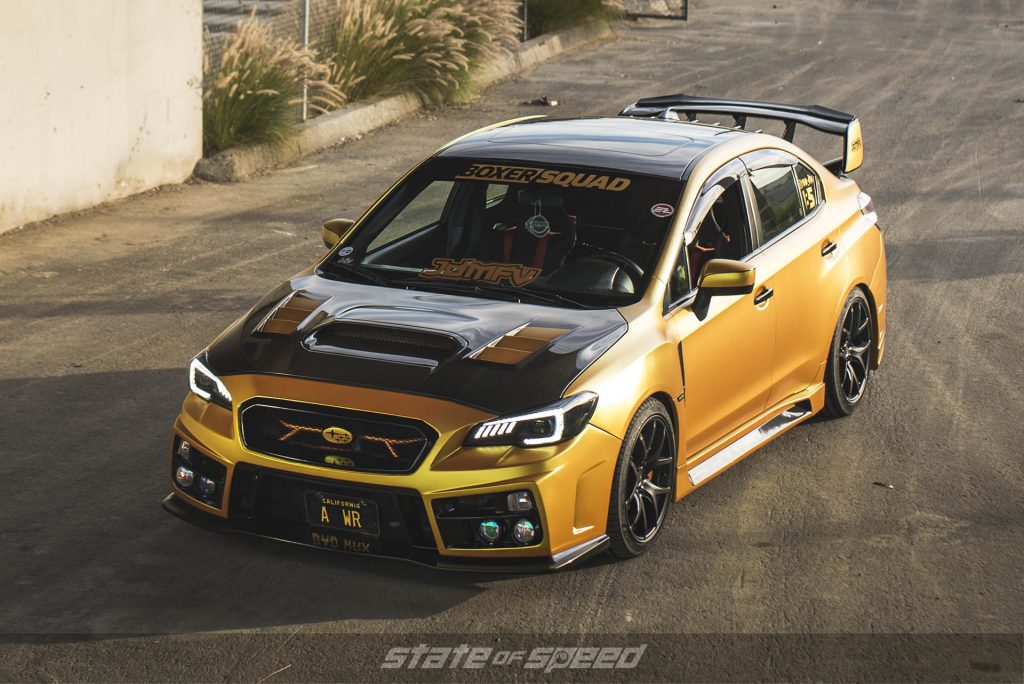
Tires: Nankang NS-25


